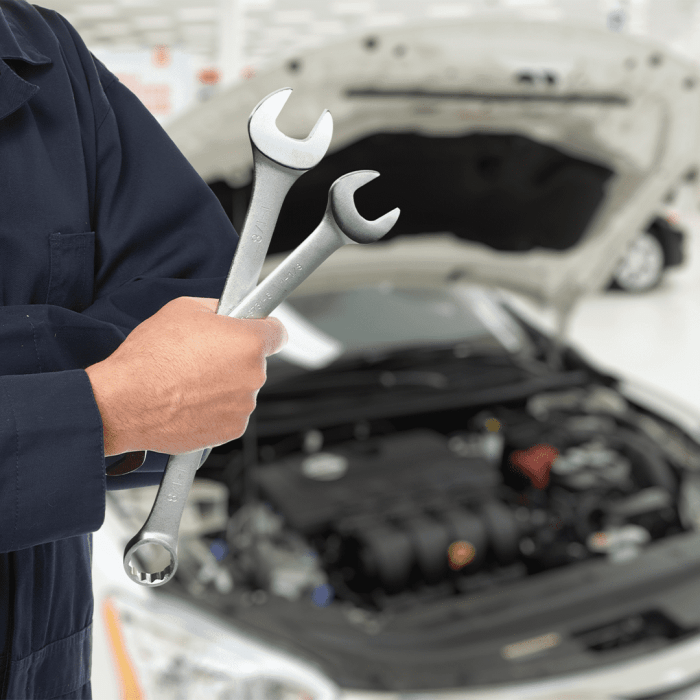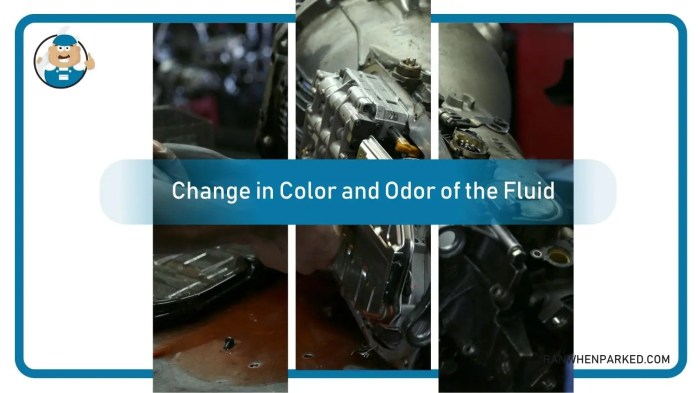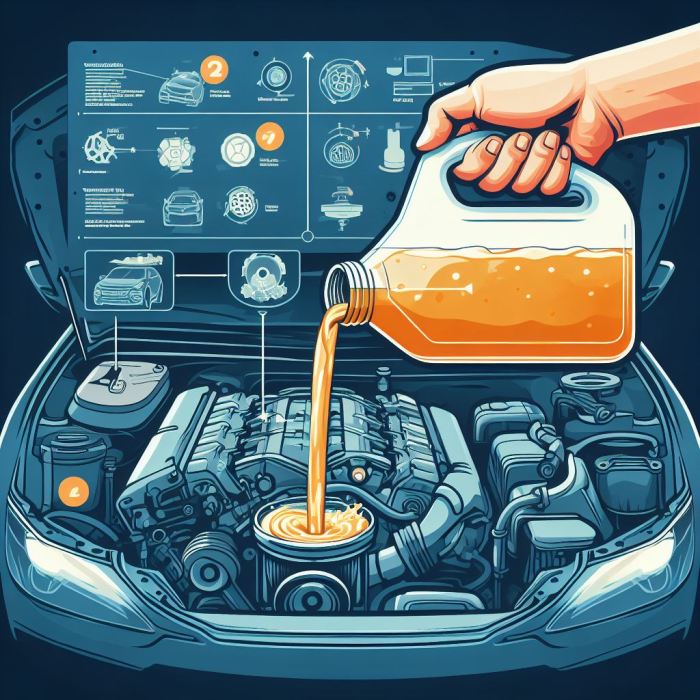Signs your car needs a transmission flush? Dude, that’s a serious situation, but don’t panic! Your transmission is basically the heart of your ride, smoothly shifting gears and keeping you rolling. This guide will break down the key signs your transmission’s crying out for a flush, from weird noises to that alarming smell. We’ll cover everything from DIY checks to when you should totally call a pro.
Think of your transmission fluid like the blood in your car’s veins. It lubricates everything, keeping parts cool and working together. Over time, this fluid breaks down, gets dirty, and loses its effectiveness. Ignoring the warning signs can lead to major, expensive problems down the road—like a completely shot transmission. So, let’s dive into the details and keep your car running smoothly.
Understanding Transmission Fluid
Your car’s transmission is a complex system responsible for transferring power from the engine to the wheels, allowing you to smoothly change gears. Think of transmission fluid as the lifeblood of this system – it’s crucial for its proper functioning and longevity. Without it, your transmission would overheat and quickly fail.Transmission fluid serves several vital functions. It lubricates the moving parts within the transmission, reducing friction and wear.
It also acts as a coolant, dissipating heat generated during operation. Furthermore, it helps to clean and suspend contaminants, preventing them from damaging delicate components. Finally, it transmits hydraulic pressure, enabling the smooth shifting of gears in automatic transmissions.
Transmission Fluid Composition
Typical automatic transmission fluid (ATF) is a complex mixture of several key components. A base oil, usually a highly refined mineral oil or synthetic oil, forms the foundation. This base oil is then enhanced with a variety of additives to improve its performance characteristics. These additives include friction modifiers to ensure smooth gear changes, antioxidants to prevent oxidation and degradation, detergents and dispersants to keep the fluid clean, and anti-wear agents to protect against wear and tear.
The precise formulation of ATF varies depending on the manufacturer and the specific requirements of the transmission. For example, some fluids are designed for specific types of transmissions, like those found in high-performance vehicles. The exact ratios of these components are proprietary information, but the general principles remain consistent across most formulations.
Transmission Fluid Degradation
Over time, transmission fluid inevitably degrades. This degradation is a result of several factors. High temperatures generated during operation cause the fluid to oxidize, leading to the formation of sludge and varnish. This sludge can clog critical passages within the transmission, interfering with its operation and potentially causing failure. Contaminants, such as metal particles from wear and tear, also accumulate in the fluid, further contributing to its degradation.
Finally, the additives within the fluid gradually deplete, reducing its effectiveness. The rate of degradation depends on several factors, including the operating conditions of the vehicle, the quality of the fluid, and the frequency of fluid changes. For example, frequent stop-and-go driving in heavy traffic generates more heat and accelerates fluid degradation compared to highway driving. Regular maintenance, including scheduled fluid changes, is crucial to mitigate the effects of fluid degradation and prolong the life of the transmission.
Early Warning Signs of Needed Transmission Flush: Signs Your Car Needs A Transmission Flush

Your car’s transmission is a complex system, and like any intricate machine, it requires regular maintenance to function optimally. Ignoring the signs of a failing transmission can lead to costly repairs down the line, so paying attention to early warning signals is crucial for preventing major problems. Regular transmission fluid flushes are a key part of preventative maintenance, helping to extend the life of your transmission.Ignoring these early warning signs can result in significantly more expensive repairs, potentially necessitating a complete transmission replacement.
The longer you wait, the more damage can accumulate, leading to a cascade of problems and a much larger repair bill. Early intervention is always cheaper and less disruptive.
Slipping or Delayed Gear Changes
A common sign of trouble is when your car hesitates or slips while shifting gears. This might manifest as a delayed response when accelerating or a sudden lurch as the transmission struggles to engage the correct gear. For example, you might experience a noticeable delay when shifting from park to drive, or the car might hesitate before accelerating smoothly.
This slipping indicates that the transmission fluid is likely contaminated or low, preventing the proper lubrication and engagement of the internal components.
Rough Shifting
Rough or harsh shifting, characterized by jarring transitions between gears, indicates problems with the transmission’s internal mechanisms. This can be particularly noticeable during acceleration or deceleration. Imagine a jerky, uncomfortable ride where the shifts feel abrupt and unpleasant, rather than smooth and seamless. This roughness often stems from degraded transmission fluid, which loses its ability to properly lubricate and cushion the moving parts, leading to increased friction and wear.
Strange Noises Emitting from the Transmission
Unusual noises coming from the transmission area, such as whining, humming, or clunking sounds, are serious warning signs. These sounds often worsen with increased engine load or higher speeds. For instance, a high-pitched whine might indicate low fluid levels or worn bearings, while a clunking noise could suggest damaged internal components. These noises are often indicative of a problem that requires immediate attention to prevent catastrophic failure.
Transmission Fluid Leaks
A visible leak of transmission fluid is a clear indicator of a problem. Look for reddish-brown fluid pooling under your car, especially around the transmission pan. The leak might be slow or rapid, but any amount of fluid loss is concerning, as it compromises the transmission’s lubrication. This can result from a damaged seal, cracked transmission pan, or other issues that require immediate repair to prevent complete fluid loss and further damage to the transmission.
Burning Smell
A burnt smell emanating from the engine compartment, often accompanied by a dark or discolored transmission fluid, is a strong indication of overheated transmission fluid. This is often caused by low fluid levels, contaminated fluid, or a failing transmission cooler. The smell is akin to the scent of burnt sugar or hot oil. This is a critical warning sign that needs immediate attention to prevent further damage and potential failure of the transmission.
Symptoms Indicating a Failing Transmission
Ignoring subtle transmission issues can lead to costly repairs down the line. A simple transmission fluid flush addresses minor issues like sluggish shifting or slightly burnt-smelling fluid. However, more severe symptoms point to a failing transmission, requiring significantly more extensive and expensive repairs. Understanding the difference between these symptoms is crucial for preventative maintenance and avoiding a major financial headache.Ignoring these serious transmission problems can lead to a cascade of further damage, potentially rendering your vehicle undrivable and resulting in repair bills that far exceed the cost of preventative maintenance.
These costs can range from several hundred dollars for minor repairs to thousands for a complete transmission replacement or rebuild. In some cases, the damage may be so extensive that the vehicle is deemed a total loss. Therefore, prompt attention to these warning signs is paramount.
Slipping or Delayed Gears
A transmission that slips or hesitates to engage gears indicates a serious problem. Unlike the slightly sluggish shifting sometimes remedied by a fluid flush, this symptom points to worn-out clutch packs, low fluid pressure, or internal damage within the transmission itself. A slipping transmission might feel like the car is momentarily losing power or struggling to accelerate smoothly.
This is drastically different from the minor delays a transmission might experience with old fluid – a failing transmission will exhibit consistent and noticeable slippage, especially under load, such as accelerating uphill or passing another vehicle. The cost of repair for this issue can range from $1,000 to $4,000 or more, depending on the extent of the damage and the vehicle make and model.
Unusual Noises from the Transmission
Whining, grinding, or clunking noises emanating from the transmission area are significant warning signs. While a slightly rough shift might be indicative of old fluid, these harsh noises often signify more severe problems like worn gears, failing bearings, or low fluid levels due to a leak. These sounds are usually noticeable during acceleration, deceleration, or while shifting gears. They’re distinct from the subtle hum or whine sometimes heard in older vehicles with worn fluid – these are harsh, grating sounds that indicate significant mechanical damage.
Ignoring these sounds can lead to catastrophic failure, resulting in repair costs exceeding $3,000, and possibly even necessitating a complete transmission replacement.
Transmission Fluid Leakage
While a minor leak might only necessitate a fluid top-off, a significant transmission fluid leak is a serious problem. This indicates a breach in the transmission casing, potentially due to a damaged seal or worn components. Unlike the slow, almost imperceptible fluid loss associated with aging fluid, a significant leak results in a noticeable puddle of reddish-brown fluid under the vehicle.
This leak can quickly lead to low fluid levels, resulting in overheating and complete transmission failure. Repair costs for this can vary significantly depending on the location and extent of the leak, but often exceed $1,000 due to the labor involved in accessing and repairing the transmission.
Transmission Fluid Color and Condition
Your transmission fluid is more than just a lubricant; it’s a vital indicator of your car’s transmission health. Regularly checking its color and condition can save you from costly repairs down the line. Ignoring changes in your transmission fluid can lead to significant damage, so understanding what you’re looking at is crucial.Regularly checking your transmission fluid allows you to catch potential problems early, preventing more extensive and expensive repairs.
A simple visual inspection can provide valuable insights into the internal workings of your transmission. Pay attention to both the color and the consistency of the fluid.
Transmission Fluid Color and Condition Indicators
The appearance of your transmission fluid can tell you a lot about its condition. Here’s a breakdown of what different colors and conditions might mean:
| Fluid Color | Condition Description | Potential Issue | Recommended Action |
|---|---|---|---|
| Bright Red/Pink (New) | Clear, clean, and smells slightly sweet. | None; fluid is in good condition. | Continue regular checks; follow manufacturer’s recommended fluid change intervals. |
| Dark Red/Brown | Slightly darker than new, may have a slightly burnt smell. | Fluid is aging and losing its lubricating properties. Potential for minor wear and tear within the transmission. | Consider a transmission fluid change sooner than the manufacturer’s recommended interval. |
| Dark Brown/Black | Very dark, possibly with a burnt smell; may appear thick or gritty. | Significant wear and tear; friction materials are breaking down; potential for serious internal damage. | Immediate professional inspection is recommended. A transmission flush may be necessary, or more extensive repairs might be required. |
| Gray/Milky | Cloudy, opaque, and possibly has a milky appearance. | Contamination with coolant; this indicates a leak in the cooling system or a serious internal transmission failure. | Immediate professional inspection and repair are critical to prevent further damage. |
| Pinkish with metallic particles | Fluid is pink, but contains visible metallic particles. | Internal wear within the transmission, indicating potential gear damage or bearing wear. | Immediate professional inspection is needed to assess the extent of the damage and determine necessary repairs. |
Driving Habits and Transmission Health
Your driving style significantly impacts your transmission’s lifespan and the frequency of needed maintenance, like transmission flushes. Aggressive driving puts considerably more stress on the transmission than a gentler approach, leading to faster fluid degradation and potential component wear.Aggressive driving habits, such as rapid acceleration, hard braking, and frequent shifting between gears, subject the transmission fluid to extreme temperatures and pressures.
This intense stress accelerates the breakdown of the fluid’s lubricating and cooling properties, leading to premature wear and tear on the transmission’s internal components. The heat generated during aggressive driving can also cause the fluid to oxidize more quickly, creating sludge and deposits that clog the transmission’s intricate passages and valves. This ultimately reduces efficiency and can lead to costly repairs.
The Impact of Aggressive Driving on Transmission Fluid
Frequent harsh acceleration and sudden stops cause significant temperature fluctuations within the transmission. This cyclical heating and cooling process accelerates the oxidation of the transmission fluid, leading to a shorter lifespan. The resulting sludge and varnish can interfere with proper valve operation and lubrication, potentially causing premature wear on clutches, bands, and other internal components. Imagine a constantly overworked engine – that’s what your transmission experiences under aggressive driving conditions.
For example, frequently launching your car from a standstill with excessive throttle input generates immense heat and stress, rapidly degrading the transmission fluid and increasing the risk of premature failure. Conversely, a smooth and controlled driving style minimizes these extreme conditions, allowing the transmission fluid to perform optimally for a longer period.
Mitigation of Harsh Driving Effects Through Regular Maintenance
Regular transmission fluid and filter changes are crucial for mitigating the negative effects of aggressive driving. Fresh fluid provides optimal lubrication and cooling, reducing wear and tear on the transmission components. Replacing the filter removes accumulated contaminants, preventing them from further degrading the fluid and damaging the transmission. Think of it like changing the oil in your engine – it’s preventative maintenance that significantly extends the life of a vital component.
For example, a driver who frequently engages in aggressive driving might benefit from more frequent fluid changes, perhaps every 30,000 miles instead of the manufacturer’s recommended 60,000 miles. This proactive approach helps offset the accelerated wear and tear caused by harsh driving conditions.
Driving Habits and Transmission Flush Frequency
The frequency of needed transmission flushes is directly related to driving habits. Aggressive driving necessitates more frequent flushes to counteract the accelerated fluid degradation. Conversely, a gentle driving style extends the interval between necessary flushes. Consider a city driver who frequently encounters stop-and-go traffic versus a highway driver who maintains a consistent speed. The city driver, subjected to more frequent harsh acceleration and braking, will likely require more frequent transmission flushes to maintain optimal transmission health.
In contrast, the highway driver might be able to extend the time between flushes, provided regular maintenance is performed. Therefore, individual driving habits should inform the frequency of transmission flushes, rather than solely relying on manufacturer recommendations.
Visual Inspection and Other Checks

Regular visual inspections and checks of your transmission fluid can help you catch potential problems early, saving you from costly repairs down the line. Ignoring these simple checks can lead to significant damage and expensive transmission replacements. A proactive approach is always best.Performing a thorough inspection involves more than just checking the fluid level; it also includes assessing the fluid’s condition and looking for any leaks or unusual signs.
This section will Artikel the necessary steps to perform a comprehensive visual inspection.
Transmission Fluid Visual Inspection Checklist, Signs your car needs a transmission flush
A visual inspection is a crucial first step in assessing your transmission’s health. The appearance of your transmission fluid can tell you a lot about its condition and whether a flush might be needed. Pay close attention to color, clarity, and the presence of any contaminants.
- Fluid Color: Note the color of the fluid. Fresh transmission fluid is typically a bright red or pink. Dark brown or black fluid indicates significant wear and likely requires attention.
- Fluid Clarity: Check for clarity. Cloudy or milky fluid suggests the presence of water contamination, a serious problem.
- Presence of Debris: Look for any metal shavings, particles, or other debris in the fluid. This could indicate internal transmission wear.
- Fluid Level: Verify that the fluid level is within the acceptable range on the dipstick. Low fluid levels are a major concern.
- Leaks: Inspect the transmission pan, lines, and seals for any signs of leaks. Look for fluid stains or drips.
- Smell: Note the smell of the fluid. A burnt smell is a strong indicator of overheating and potential damage.
Checking Transmission Fluid Level
Checking your transmission fluid level is a simple process, but it’s crucial to do it correctly. Incorrect procedure can lead to inaccurate readings. Remember to always consult your vehicle’s owner’s manual for specific instructions as procedures may vary slightly by vehicle make and model.
- Warm up the vehicle: Run the engine for about 10-15 minutes to allow the transmission fluid to reach its optimal operating temperature. This ensures an accurate reading.
- Park on a level surface: Make sure your vehicle is parked on a level surface to prevent inaccurate readings caused by uneven fluid distribution.
- Engage the parking brake: Securely engage the parking brake to prevent the vehicle from rolling.
- Locate the dipstick: Find the transmission dipstick; it is usually marked with a symbol resembling a gear or the letter “T.”
- Remove and wipe the dipstick: Remove the dipstick, wipe it clean with a lint-free cloth, and reinsert it fully.
- Remove and check the level: Remove the dipstick again and check the fluid level against the markings on the dipstick. The level should be within the “full” range.
Basic Transmission Fluid Inspection Procedure
This procedure combines visual inspection with a fluid level check for a more comprehensive assessment.
- Prepare the vehicle: Park the vehicle on a level surface, engage the parking brake, and let the engine run for 10-15 minutes.
- Locate the dipstick and check the level: Follow the steps Artikeld in “Checking Transmission Fluid Level.”
- Inspect the fluid: Remove a small amount of fluid onto a clean white cloth or paper towel to examine its color, clarity, and presence of debris. Refer to the “Transmission Fluid Visual Inspection Checklist” for guidance.
- Check for leaks: Carefully inspect the transmission pan, lines, and surrounding areas for any signs of leaks or fluid stains.
- Note findings: Record your observations, including fluid color, clarity, level, and presence of leaks or debris. This information will be valuable if you need to consult a mechanic.
The Transmission Flush Procedure
Performing a transmission flush is a significant undertaking that requires both mechanical aptitude and careful attention to detail. While some mechanics recommend against DIY transmission flushes due to the complexity and potential for damage, understanding the process can empower you to make informed decisions about your vehicle’s maintenance. This section details the procedure, necessary tools, and crucial safety precautions.
Tools and Materials Required for a Transmission Flush
Gathering the correct tools and materials beforehand is essential for a smooth and safe transmission flush. Improper tools can lead to damage, leaks, and ultimately, a more expensive repair. The list below covers the essentials; always consult your vehicle’s repair manual for specific requirements and compatibility.
- New transmission fluid (the correct type and quantity specified in your owner’s manual)
- A transmission fluid drain pan (large enough to hold the entire capacity of your transmission)
- A wrench or socket set (to remove the drain plug and fill plug)
- Funnel (for adding new transmission fluid)
- Jack and jack stands (to safely lift the vehicle)
- Wheel chocks (to secure the vehicle)
- Gloves (to protect your hands from the hot fluid)
- Rags or shop towels (for cleaning up spills)
- Torque wrench (to tighten the drain and fill plugs to the manufacturer’s specifications)
- Optional: Transmission fluid pump (to facilitate filling the transmission)
Step-by-Step Guide to Performing a Transmission Flush
The following steps Artikel a general transmission flush procedure. Remember that specific steps may vary depending on your vehicle’s make and model. Always consult your vehicle’s repair manual for detailed instructions and torque specifications. Improper procedures can cause irreversible damage.
So, your car’s shifting kinda jerky? That could totally mean your transmission needs a flush. Keeping your ride in tip-top shape is key, especially if you’re planning to join one of the awesome Luxury car clubs in Chicago 2025 , where smooth rides are a must. Ignoring a needed transmission flush could lead to bigger, way more expensive problems down the line, so get it checked ASAP!
- Safety First: Ensure the vehicle is parked on a level surface, engaged in park, and the emergency brake is firmly applied. Use wheel chocks for added security. Wear gloves and eye protection.
- Vehicle Preparation: Warm up the transmission fluid by running the engine for about 10-15 minutes. This allows the fluid to flow more easily.
- Locate Drain Plug: Consult your vehicle’s repair manual to locate the transmission fluid drain plug. It is typically located on the bottom of the transmission pan.
- Drain the Old Fluid: Position the drain pan under the drain plug. Carefully loosen and remove the drain plug, allowing the old transmission fluid to drain completely. Be cautious as the fluid will be hot.
- Remove Transmission Pan (Optional): Some transmission flushes involve removing the transmission pan to access the filter and clean debris. This requires additional tools and expertise. Consult your vehicle’s repair manual.
- Replace Filter (Optional): If the transmission pan is removed, replace the transmission filter with a new one.
- Reinstall Pan (Optional): Carefully reinstall the transmission pan, ensuring a proper seal.
- Replace Drain Plug: Once the old fluid has drained, carefully reinstall and tighten the drain plug to the manufacturer’s specified torque. Do not overtighten.
- Locate Fill Plug: Locate the transmission fluid fill plug (often near the top of the transmission). Consult your repair manual.
- Add New Fluid: Using a funnel, carefully add the correct amount of new transmission fluid as specified in your owner’s manual. Use a transmission fluid pump if available for easier filling.
- Check Fluid Level: Once the new fluid is added, check the fluid level using the dipstick (if applicable). Add more fluid as needed to reach the correct level.
- Test Drive: After completing the flush, take the vehicle for a short test drive to circulate the new fluid. Check for leaks afterwards.
Important Safety Precautions During a Transmission Flush
Working with hot transmission fluid presents significant risks. Burns are a serious concern, and improper handling can lead to environmental damage. The following precautions are crucial:
- Always allow the fluid to cool completely before handling.
- Wear appropriate safety gear, including gloves and eye protection.
- Work in a well-ventilated area.
- Dispose of used transmission fluid responsibly, according to local regulations.
- Never attempt a transmission flush if you are not comfortable with the procedure. Consult a professional mechanic.
Alternatives to a Transmission Flush
So, you’re facing the prospect of a transmission flush, but maybe you’re feeling a little hesitant about the cost or the potential for complications. Good news! There’s another option: a simple transmission fluid and filter change. Let’s break down the differences between these two procedures and help you decide which is best for your situation.A transmission fluid change involves draining and replacing only a portion of the fluid in your transmission.
A transmission flush, on the other hand, uses a machine to completely purge the old fluid and replace it with fresh fluid. Both aim to improve transmission performance, but they do so with varying degrees of thoroughness and potential risks.
So, your car’s shifting kinda jerky? That could mean you need a transmission flush. If you’re thinking about upgrading though, maybe check out these sweet luxury car lease deals under $1,000/month in 2025: Luxury car lease deals under $1,000/month 2025. But before you trade it in, make sure that transmission’s healthy; a neglected transmission can be a costly repair down the road.
Transmission Fluid Change versus Transmission Flush
A transmission fluid change is a less invasive procedure. It’s typically cheaper and quicker than a flush. The mechanic simply drains the fluid from the transmission pan, replaces the filter (if applicable), and adds new fluid. This method removes a significant portion of the contaminated fluid, but some old fluid inevitably remains within the torque converter and transmission lines.
A transmission flush, however, employs a machine to circulate new fluid throughout the entire transmission system, effectively flushing out more contaminants. This leads to a more complete cleaning but carries a slightly higher risk of dislodging debris that could cause further problems.
Advantages and Disadvantages of Each Method
| Method | Advantages | Disadvantages |
|---|---|---|
| Transmission Fluid Change | Less expensive, less time-consuming, lower risk of complications | Less effective at removing all contaminants, may not fully address underlying issues |
| Transmission Flush | More effective at removing contaminants, potentially extends transmission lifespan | More expensive, more time-consuming, slightly higher risk of dislodging debris, not always necessary |
Situations Where a Simple Fluid Change Might Suffice
A simple fluid change is often sufficient if your transmission is exhibiting minor issues, such as slightly rough shifting or a slightly delayed engagement. If your transmission fluid is simply showing signs of age – discoloration or a burnt smell – a fluid change might be enough to improve its performance. For instance, if your car is relatively new and you’re simply following a recommended maintenance schedule, a fluid change would likely be adequate.
Regular fluid changes are a preventative measure that can significantly extend the life of your transmission. Similarly, if you’ve noticed a slight slippage only under heavy loads, and the fluid is merely slightly darker than usual, a change may suffice. However, if you’re experiencing significant issues such as complete slippage, harsh shifting, or whining noises, a flush might not be enough and more extensive repairs may be necessary.
When to Seek Professional Help
Knowing when to call in a pro for your transmission woes is crucial. Attempting a DIY transmission flush or repair without the right knowledge and tools can lead to serious and costly damage, far exceeding the cost of professional service. This section Artikels situations demanding expert intervention and highlights the risks of going it alone.Attempting a transmission flush yourself, especially if you lack experience working on vehicles, can result in several problems.
Improper fluid levels, incorrect fluid type, or damage to internal transmission components are all potential outcomes. These issues can lead to further transmission damage, requiring far more extensive and expensive repairs than a simple flush. The specialized tools and knowledge needed to properly perform a transmission flush are beyond the reach of most DIY mechanics.
Risks of DIY Transmission Flush
The potential for damage when attempting a transmission flush without the proper knowledge and tools is significant. For instance, using the wrong type of transmission fluid can cause immediate damage to seals and internal components. Improper fluid levels can lead to overheating and premature wear, while failing to properly purge the old fluid can leave behind contaminants that continue to damage the transmission.
Furthermore, the intricate nature of a modern automatic transmission requires specialized tools for proper fluid removal and refilling, which most home mechanics do not possess. A damaged torque converter, for example, is a costly repair often resulting from improper DIY transmission servicing. The risk of causing irreparable harm far outweighs any potential cost savings.
Importance of Professional Mechanic Consultation
Consulting a qualified mechanic is paramount when experiencing any transmission issues, even seemingly minor ones. A professional mechanic possesses the expertise to accurately diagnose the problem, determine the necessary course of action, and perform the repairs using the correct tools and techniques. They can identify problems that may not be immediately apparent, such as low fluid levels caused by a leak, or internal damage from worn components.
A professional diagnosis prevents costly mistakes that could result from attempting repairs without the necessary knowledge. Furthermore, a qualified mechanic can provide advice on preventative maintenance, such as regularly scheduled fluid changes, to prolong the life of your transmission. The peace of mind that comes with professional service is well worth the investment in ensuring your vehicle’s longevity and safety.
End of Discussion

So, there you have it—the lowdown on recognizing when your car needs a transmission flush. Remember, catching these issues early can save you big bucks and keep your ride in tip-top shape. Regular checks, a little preventative maintenance, and knowing when to seek professional help will keep your car happy (and your wallet a little fuller). Now go forth and conquer the road!









